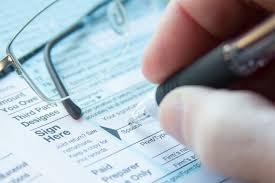
Some errors on your tax return can cost you a large refund or end up with a larger tax debt with penalties and interest. There could be an audit in the worst cases, but you can defend yourself against these headaches by proactively avoiding errors on your tax return.
Here are some common tax filing mistakes
Messing up with the Basics
The correct spelling of your name and your dependents, alongside their social security number, is essential. Make sure your filing status is valid; for instance, an unmarried taxpayer might file as single even though one might qualify for a better and favorable tax rate as the head of household. When the circumstance is right, couples might pay less tax if they did not file jointly.
You did not Enter Information Reported to you and Uncle Sam.
All the wages, bank interest, dividends, and other income you got, which was reported on a Form W2, K1, or 1099 must be carefully entered. Such forms were reported to Uncle Sam, and their system will try to match the information with your return. In case you want to dispute what they reported to you, request a correction from your employer.
You Entered Information on Wrong Lines
Make sure all entries appear where they need to. Avoid putting your taxable IRS distributions where the tax-free IRA rollover should be. One way to avoid these errors is via using tax software. All in all, before submitting, make sure to double-check where all items appear on your final return.
You took the Standard Deduction Automatically.
Taking the standard deduction approach requires many efforts like receipts and other proof compared to itemizing deduction, which might even cost you more eventually. Make sure you check the process that gets you the greater deduction.
Since the standard deduction had almost doubled a couple of years ago, itemizing might not save you money. However, you will be in a better position to test both methods. High-quality tax software will automatically estimate the best of the two approaches.
Not Cross-checking for Typos
Many people are fond of rounding up a number. Other common errors like transposing a number or omitting a digit could affect the info on your return. For instance, consider someone who contributed $5,200 to their IRA but mistakenly entered $2,500 due to the report's deduction. This will cheat the fellow deduction up to $2,700 and cost the person $648 in taxes assuming a 24% tax bracket.
Using the Minus Sign for Negative Numbers
You might need to report some items as a negative number – use brackets, not the minus sign. With this, Uncle Sam’s computer will be able to read the entries.
You gave Uncle Sam no Detail on How you want Your Refund Handled
You might overpay your taxes, and you are expecting a refund. It is, however, essential to be proactive about what you wish Uncle Sam to do. If you gave no instruction, the US treasury would mail you a check.
A faster way to get your refund is to include your bank account details (routing number with the account number) that allow for the refund to be deposited straight to your account. There is are many things you can do with your refund like:
Splitting the refunds into three accounts
Use it for the estimated tax of the coming year
Direct it as contributions to your retirement account
Purchase marketable securities from the US Treasury
More information is available on Form 8888, which sheds light on the options you have
You did not Pay the Proper Way
When you owe taxes, it is essential that payment is rightly credited to you. No matter which way you file – electronically or via paper, make sure to have Form 1040V alongside your check. The government designates free payment sites like DirectPay or by using a debit or credit card.
Conclusion
Make sure you have copies of your signed return as proof of filing – this is the acknowledgment that the return you sent to Uncle Sam was accepted for electronic filers. Paper filers will require a certified receipt that will be forwarded via mail.
The proof will help protect you against claims from Uncle Sam that you filed late or did not file. Also, you will need the info on the return to prepare your tax for the coming year.
FOR MORE INFORMATION ON HOW JIM McCLAFLIN, EA, NTPI FELLOW CAN HELP YOU WITH YOUR TAX NEEDS, PLEASE CLICK THE BLUE TAB ON THIS PAGE.
THANKS FOR VISITING.
Jim McClaflin, EA, NTPI Fellow, CTRC